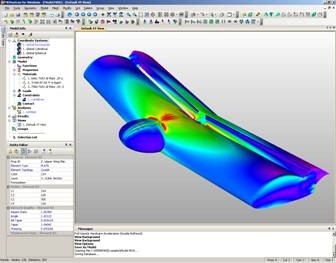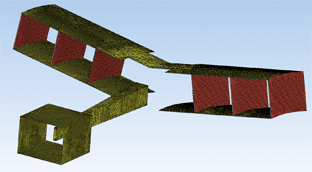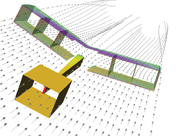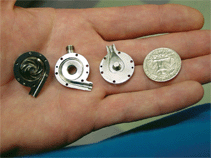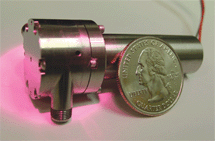Vector Fields offers new capabilities for its design software for rotating electrical machinery. The software combines finite-element analysis (FEA) modeling with a design entry system that lets you create models of electric motors or generators in minutes.
The software is an application-specific version of the Opera package, providing a front-end to the electromagnetic simulator that speeds design entry by means of ‘fill in the blanks’ dialog boxes. You select the form of motor or generator you want to design from a list of common types including induction, brushless permanent magnet, switched reluctance motors, and synchronous motors or generators. Then, you enter a list of parameters to define mechanical geometry, material properties and electrical data, and the model is automatically created. Parameters can include diameters of rotor, stator; and shaft, stator tooth width, and the number of stator slots.
New modeling features with this release include an extended range of cage geometries for induction motors. You can choose from six starting points including circular, bullet and square, plus variations and combinations of these shape elements. You can also define notch shapes on stator teeth as well as wedge geometries. The choice of geometries for wound rotor synchronous motors has been expanded in a similar way. These options give you the means to quickly arrive at a model, even for proprietary design techniques.
If you need to incorporate unusual features in a design, you have open access to scripting codes that generate models, and can modify them at will to create a proprietary automated design process. A library of material properties is also included and is selected by means of a drop-down menu.
Using the scripts provided, you can generate motor or generator models in minutes. You can then simulate electromagnetic performance and view results such as the torque produced as a function of position, or the static analysis of flux linkage in the phases of the machine as a function of position and excitation. You can try design ideas easily by varying the values of model parameters.
An automatic optimization tool is optionally available. It automatically selects and manages multiple goal-seeking algorithms to find the best design to a problem, even if you specify several or competing objectives.
Facilities include modeling the external circuit feed to the machine, as well as the mechanical load. ‘Multi-physics’ capabilities available in the package show you the effects of temperature rise, or the mechanical stresses that torque produced by the electric field will have on the machine’s component parts.
Vector Fields Inc.
www.vectorfields.com
:: Design World ::




